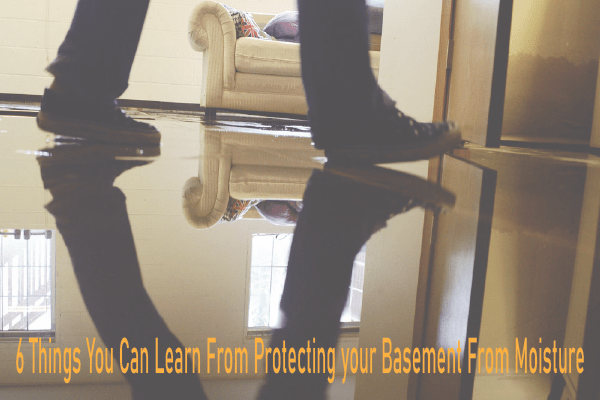Best Basement Waterproofing Fundamentals Explained
Best Basement Waterproofing Fundamentals Explained
Blog Article
Fascination About Best Basement Waterproofing
Table of Contents10 Simple Techniques For Best Basement WaterproofingBest Basement Waterproofing - QuestionsThe Ultimate Guide To Best Basement WaterproofingBest Basement Waterproofing Things To Know Before You Get ThisBest Basement Waterproofing Fundamentals Explained
AdvantaClean's qualified professionals and specialists will certainly locate the water source. If wall surface or slab splits are present, we will inject polyurethane and epoxies right into the cracks and seal the compromise, protecting against further wetness from entering.
If there's condensation on the exterior of the aluminum foil, you have high humidity in your basement. Fix it with a portable area dehumidifier or a whole-house humidifier system as opposed to waterproofing items. If the aluminum foil has condensation on the inside surface area (following to the wall surface), the soil around your home may be naturally damp from a high water table or poor soil water drainage.
You can waterproof simply your indoor walls, which might address the problem. Once they dry out, they stick permanently to concrete and masonry walls.
The 10-Second Trick For Best Basement Waterproofing
Concrete water-proof coverings can not be applied to previously repainted surface areas; check the tag. Recognized as densifiers, they are suitable only for wall surfaces that have not been repainted or sealed.
Yet you clean, roll, or spray it on much even more thickly one gallon covers just 75 square feet, not the 300 square feet common with common paint. Water-proof paint is fine for DIY application. You can apply it over painted surfaces, and paint over it once it's healed (one gallon costs $37).
It can set you back $10,000 to $15,000, depending on the work required. Outside waterproofing includes digging deep into all around the home to the complete depth of the structure walls, after that installing a water resistant finish or membrane covered by drain panels.
A basement without waterproofing is kind of like that. Your basement doesn't want to go through a rainstorm without appropriate defense just as much as you don't desire to.
The smart Trick of Best Basement Waterproofing That Nobody is Discussing
However if you have actually done your study, you 'd recognize there are two sorts of waterproofing: interior and outside. It can get puzzling what they both mean, which one's a far better financial investment, and what will in fact keep the water out. Don't stress, we placed together this blog to easily define both methods for you and talk about the advantages and disadvantages of each.
Exterior waterproofing is a waterproofing technique that entails securing your home from the exterior. It's type of like a moat around a castle. It involves excavating a trench around your entire home down to the structure (about 8 to 10 feet down). The foundation wall her explanation surfaces are after that cleaned, secured, and covered with a waterproof membrane layer or sealant.
Best Basement Waterproofing Things To Know Before You Get This
It's an extra engaged process that needs excavating up your yard, which is costly and lengthy. Exterior waterproofing involves removing every little thing surrounding the home, including verandas, driveways, walkways, landscape design, air conditioning systems, decks, and so on. If any one of the job was done inaccurately and water is still entering your cellar, there isn't much you can do to remedy or repair it.
Inside cellar waterproofing includes waterproofing from the within. Any water that leaks into your cellar is redirected before it touches your floor.
It's a reliable technique to water-proof your basement - Best Basement Waterproofing. The downside of interior cellar waterproofing mostly relates to the installation procedure. This method calls for saved items, furnishings, and integrated shelving or cabinets to More about the author be moved from touching the basement wall surfaces. And throughout installment, your cellar can not be made use of. The biggest distinction between both methods is this: Exterior waterproofing is a preventative remedy and interior waterproofing is a corrective option.
Best Basement Waterproofing Can Be Fun For Anyone
To conclude, outside and interior basement waterproofing are both effective approaches of protecting your home from water damages. Exterior waterproofing develops an obstacle that avoids water from entering your home, while interior waterproofing reroutes water that does enter your home. And it is essential to keep in mind that exterior waterproofing is a pricey and turbulent installation procedure when contrasted to indoor waterproofing.
Whichever technique you select, see his explanation to it you select a dependable and reliable professional for the task. Both approaches call for seasoned employees to handle the job. If you have any kind of questions about basement waterproofing, please reach out to us. And if you remain in our solution area and have water in your basement, call us for a cost-free, no-obligation home inspection.
You can submit our type right here, start a conversation in the bottom right-hand corner, or call us at 1-800-827-0702.
Report this page